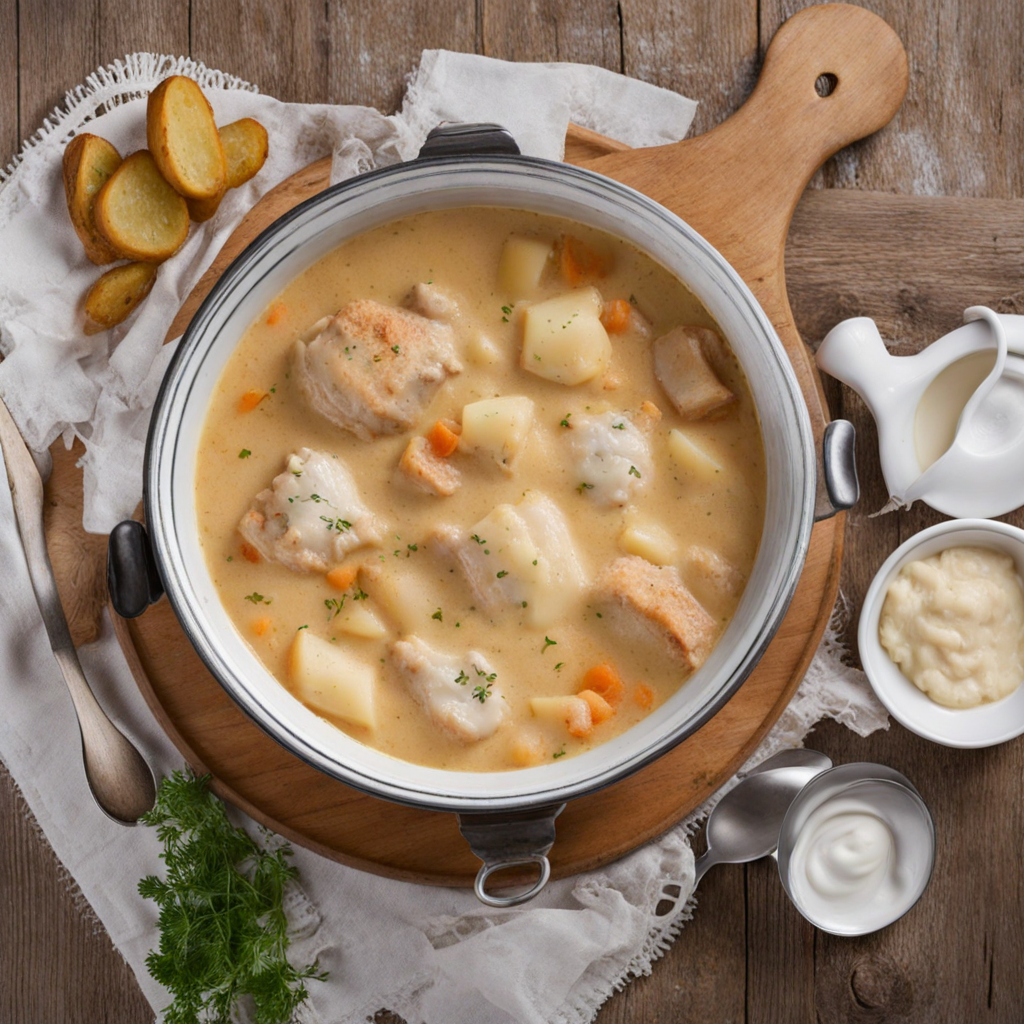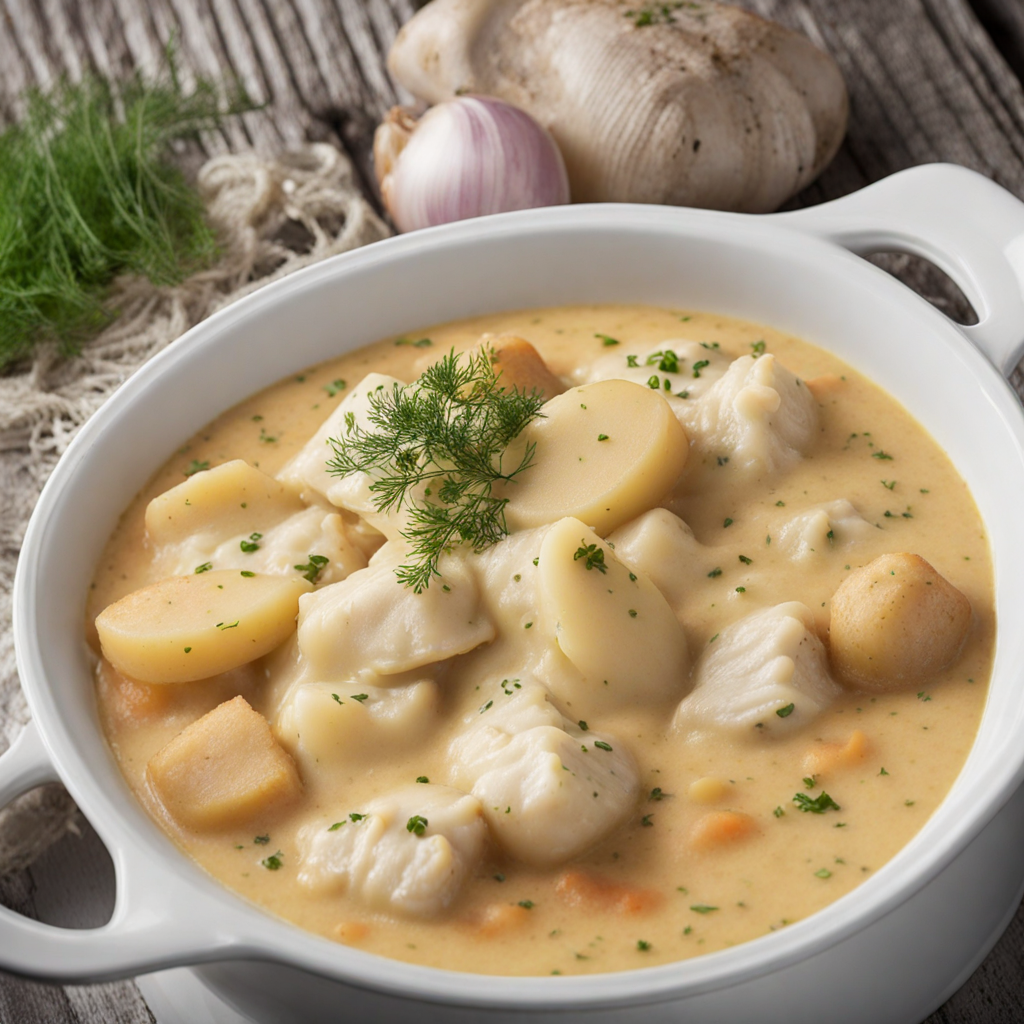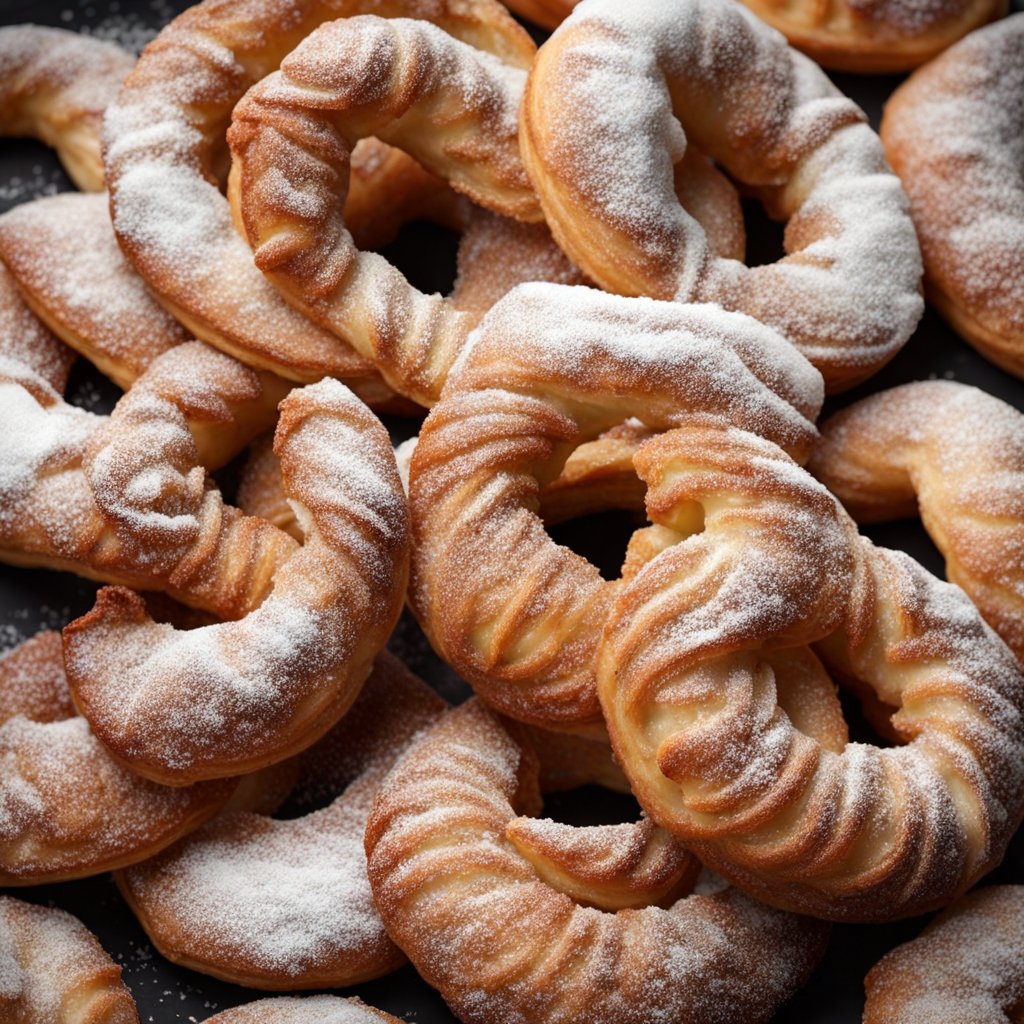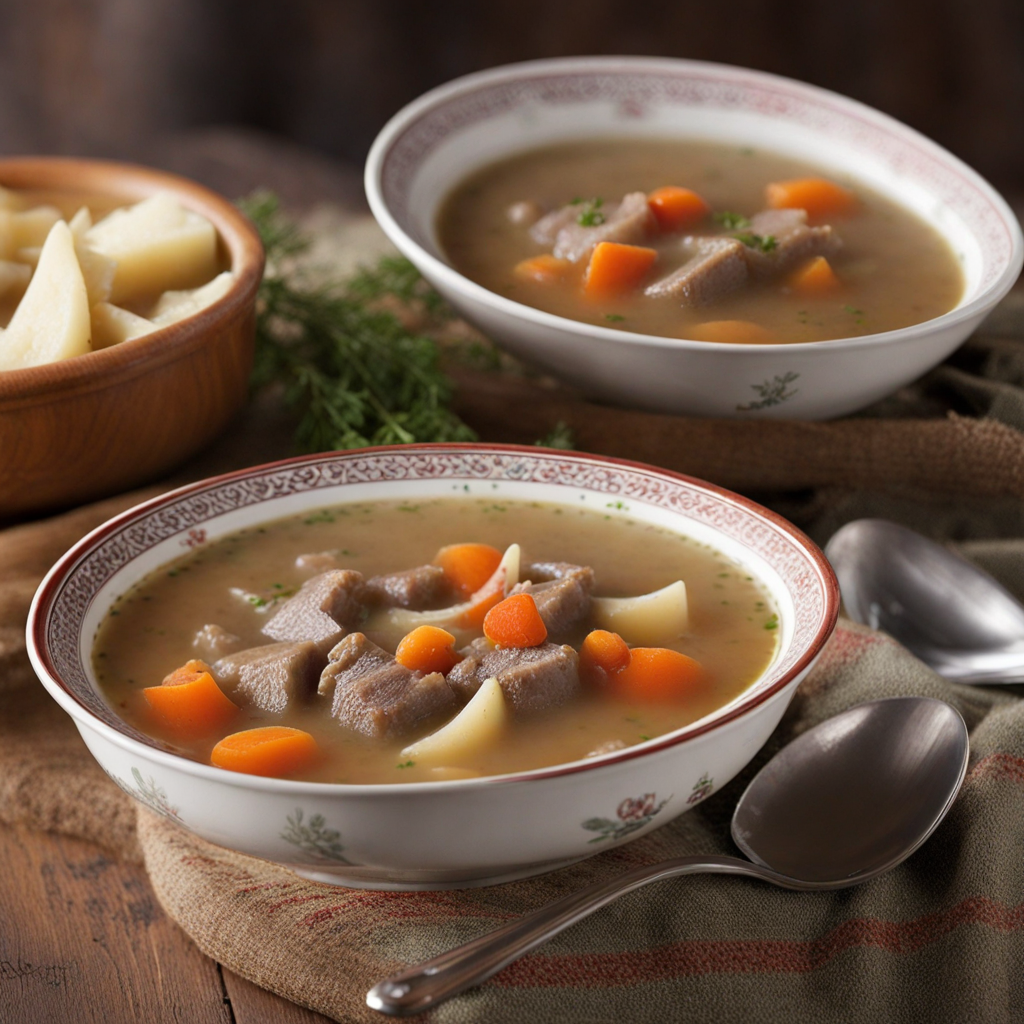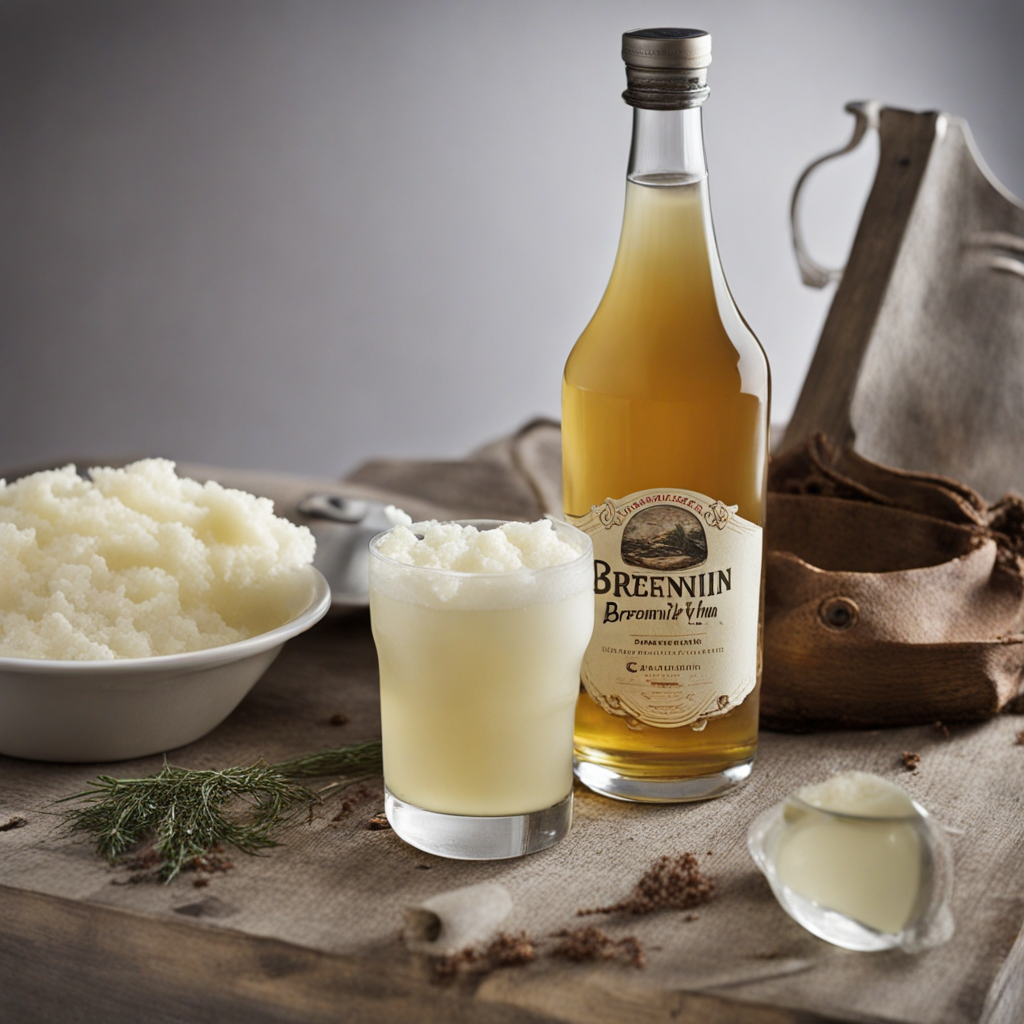Plokkfiskur
Plokkfiskur is a traditional Icelandic dish that embodies the essence of the country's culinary heritage. This hearty fish stew is made primarily from flaked fish, usually cod or haddock, and is a comforting meal that showcases the resourcefulness of Icelandic cuisine. The name "plokkfiskur" translates to "shredded fish," which aptly describes the dish's main component. Historically, plokkfiskur dates back to the early 20th century and was a staple among fishing communities, where fresh catches were plentiful. It was often prepared from leftover fish, making it an economical choice for families while ensuring that nothing went to waste. The flavor profile of plokkfiskur is mild yet satisfying, with the delicate taste of the fish harmonizing beautifully with the other ingredients. The dish is typically seasoned with salt and pepper, but it can also feature a touch of mustard for a slight tang, which complements the fish splendidly. The creamy texture is enhanced by the use of béchamel sauce, which forms the base of the dish, lending it a rich, velvety quality. This comforting stew is often served with a sprinkle of fresh herbs, such as parsley or dill, adding a hint of freshness that brightens the overall flavor. Preparation of plokkfiskur is relatively straightforward, making it a popular dish in Icelandic households. The process begins with cooking the fish, which is usually boiled or steamed until it is flaky and tender. Once cooked
How It Became This Dish
Origin of Plokkfiskur Plokkfiskur, a traditional Icelandic dish, has its roots in the necessity to make the most of the country’s abundant marine resources. The name "Plokkfiskur" translates to “mashed fish,” which aptly describes its primary ingredients: boiled fish, usually cod or haddock, mixed with potatoes and a creamy sauce. The dish likely originated in the 19th century, during a time when Iceland faced significant economic challenges and food scarcity due to harsh weather conditions and limited agricultural possibilities. The preparation of Plokkfiskur reflects the resourcefulness of Icelandic cooks, who sought to create hearty meals that could sustain families through long winters. Fish, particularly cod, has been a cornerstone of the Icelandic diet for centuries, with fishing being one of the most important industries in the country. The practice of preserving fish through drying or salting further influenced the dish's development, allowing for year-round availability. \n\n Cultural Significance Plokkfiskur is more than just a meal; it embodies the spirit of Icelandic culture and the importance of community. Traditionally served in households across the nation, it is often prepared on Fridays or during special occasions, signifying a connection to family and shared experiences. The dish holds a nostalgic value for many Icelanders, evoking memories of childhood, gatherings, and the comfort of home-cooked meals. In addition to its communal aspect, Plokkfiskur symbolizes the sustainable use of natural resources, an ethos deeply embedded in Icelandic culture. The dish is a testament to the country’s fishing heritage and the respect for the ocean’s bounty. As such, it has become a culinary representation of Iceland, celebrated for its simple yet hearty appeal. \n\n Development Over Time As Iceland’s culinary landscape evolved, so did Plokkfiskur. While the traditional recipe remains popular, modern variations have emerged, reflecting contemporary tastes and cooking techniques. The use of locally sourced ingredients, such as fresh fish and potatoes, continues to be paramount, while chefs are experimenting with flavors and textures to give the dish a modern twist. In recent years, the global interest in Icelandic cuisine has surged, leading to an increase in culinary tourism. Visitors to the country often seek out authentic experiences, and Plokkfiskur has gained recognition on restaurant menus throughout Iceland. Chefs are not only preserving the traditional methods of preparation but also introducing innovative elements, such as incorporating herbs, spices, or even different types of seafood, to appeal to a wider audience. \n\n Ingredients and Preparation The classic Plokkfiskur recipe features a few key ingredients that highlight its simplicity and heartiness. The foundational elements are boiled fish and potatoes, which are typically combined with a white sauce made from butter, flour, and milk or cream. Seasoning with salt and pepper is common, and some variations include onions for added flavor. To prepare Plokkfiskur, the fish is first boiled until flaky, then combined with boiled and mashed potatoes. The creamy sauce is prepared separately, and once all ingredients are blended, the dish is often topped with grated cheese before being baked until golden. This method not only enhances the taste but also adds a comforting texture, making it a favorite during colder months. \n\n Regional Variations Though Plokkfiskur has a standard base recipe, regional variations exist across Iceland, influenced by local tastes and ingredient availability. In some areas, for example, the dish may include other root vegetables, such as carrots or turnips, adding color and flavor. Additionally, the choice of fish can vary, with some opting for more sustainable catches that reflect the seasonality of local fishing practices. Moreover, the dish can be personalized with a variety of toppings. Some Icelanders enjoy adding a sprinkle of fresh herbs, such as dill or parsley, to enhance the flavor profile. Others may serve it with a side of pickled vegetables or a dollop of skyr, a traditional Icelandic dairy product, which provides a tangy contrast to the creamy fish mixture. \n\n Plokkfiskur in Contemporary Cuisine In today’s culinary scene, Plokkfiskur is embraced not only in homes but also in upscale restaurants, where chefs elevate the dish while honoring its roots. This has led to an increased interest in traditional Icelandic foods, promoting a renaissance of native cuisine. Cooking classes and food festivals often feature Plokkfiskur, allowing both locals and tourists to appreciate its history and preparation techniques. Moreover, the dish serves as a cultural artifact, representing Iceland's historical relationship with the sea. This connection is increasingly acknowledged in discussions surrounding sustainable fishing practices and culinary identity. As the world becomes more aware of environmental issues, dishes like Plokkfiskur highlight the importance of using local and responsibly sourced ingredients. \n\n Conclusion Plokkfiskur is a dish steeped in history, culture, and community. Its evolution from a simple, necessary meal to a celebrated dish in contemporary Icelandic cuisine showcases the adaptability and resilience of traditional foods. As Iceland continues to navigate the complexities of modern culinary trends while honoring its rich heritage, Plokkfiskur remains a beloved staple, bringing together generations through its comforting flavors and connections to the land and sea. The dish stands as a delicious reminder of Iceland's unique identity and the stories that food can tell.
You may like
Discover local flavors from Iceland


